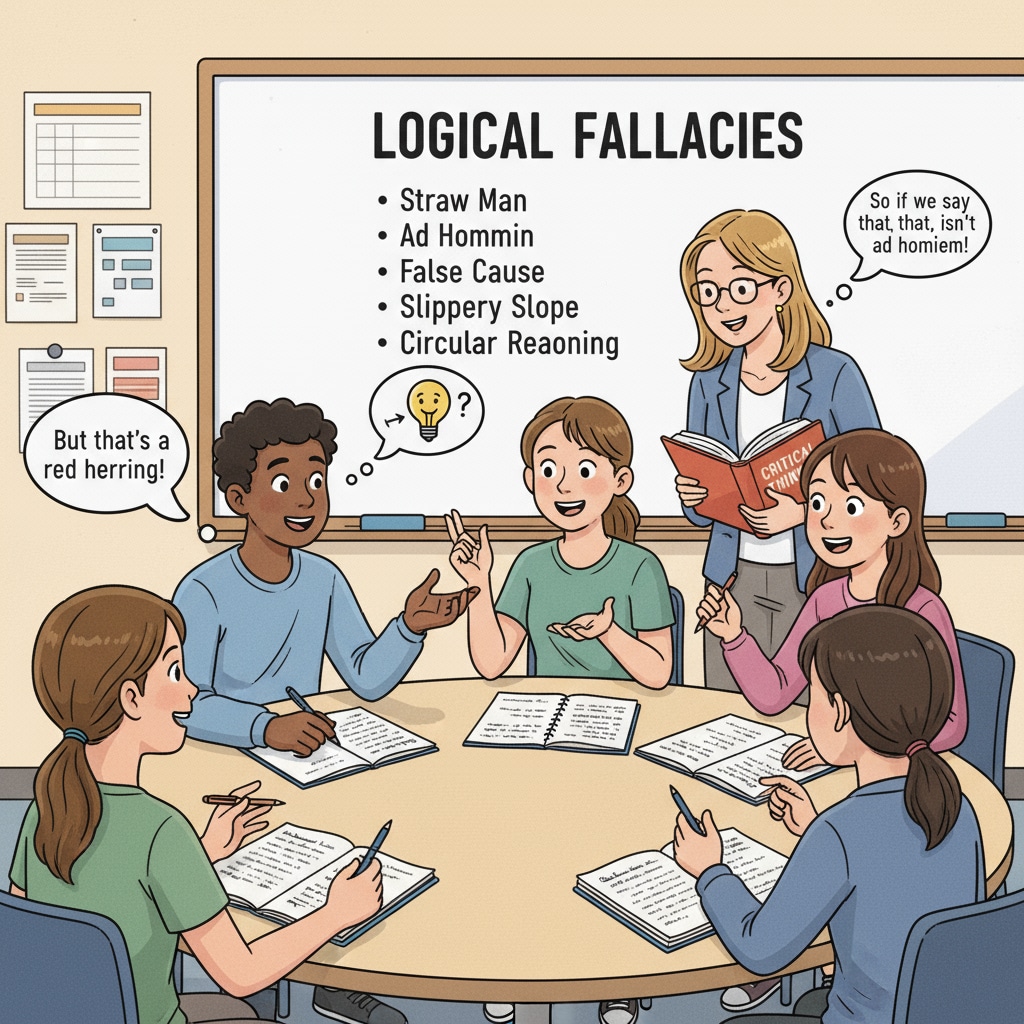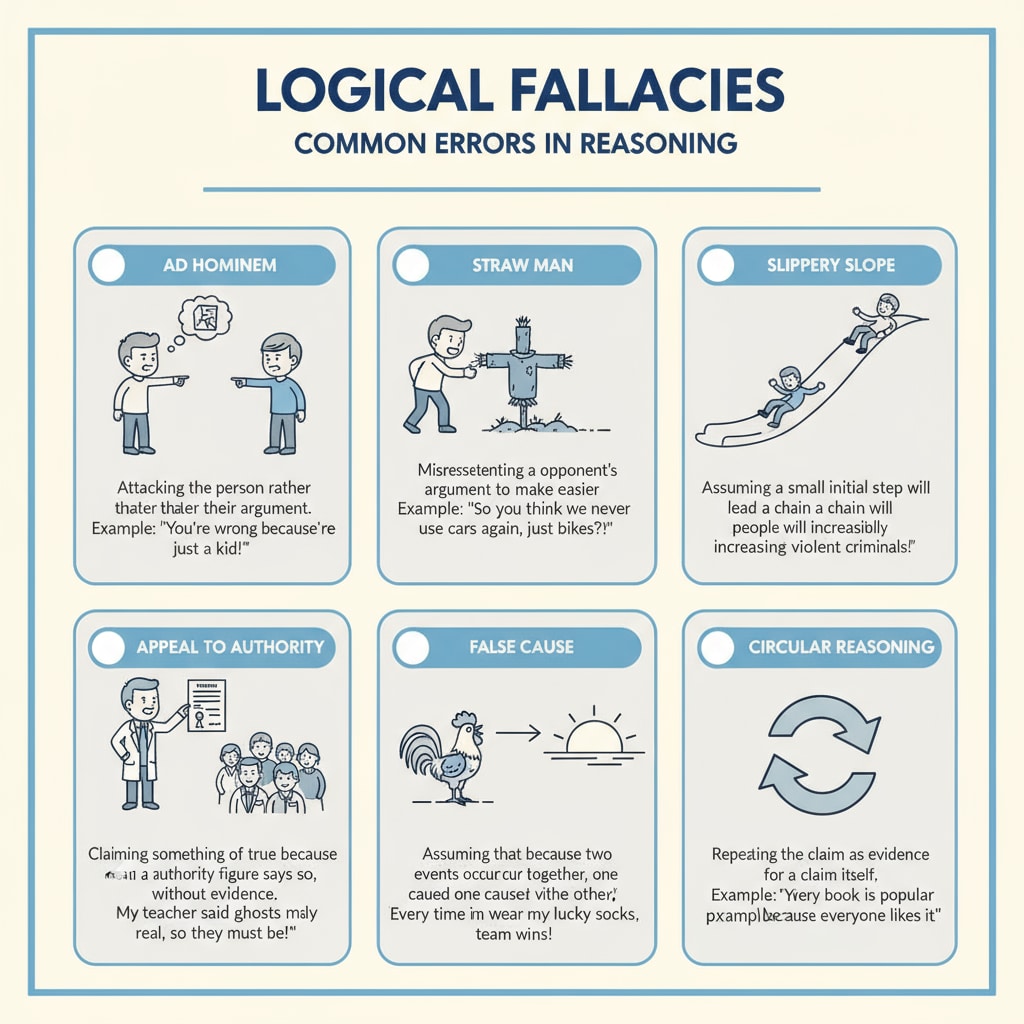In the contemporary era of information explosion and intricate media manipulation, the skills of logical fallacies, critical thinking, and propaganda recognition have become indispensable for high school students. These competencies serve as the bedrock for fostering rational decision-making and informed judgment.

As such, integrating logical fallacies education into the high school curriculum is not just a desideratum but an absolute necessity.
The Landscape of Information and the Need for Critical Thinking
Today, we are inundated with an avalanche of information from various sources, including social media, news outlets, and advertising. This information is often rife with logical fallacies, which are errors in reasoning that can mislead and manipulate. For example, the ad hominem fallacy, where an argument attacks a person rather than the substance of their argument, is commonly used to discredit opponents. Without the ability to recognize these fallacies, students are vulnerable to being swayed by false or misleading information.

The Role of Logical Fallacies Education in Cultivating Rational Citizens
Logical fallacies education plays a pivotal role in shaping rational citizens. By learning to identify and analyze fallacies, students develop the capacity to think independently and question the validity of arguments. This empowers them to make more informed choices, whether it’s in the realm of politics, consumerism, or personal relationships. As Britannica defines, critical thinking involves the ability to conceptualize, analyze, and evaluate information. Logical fallacies education is a key component in nurturing this ability.
Furthermore, in a democratic society, an informed citizenry is essential for the proper functioning of the political system. When students are equipped with the skills to recognize propaganda and logical fallacies, they are better able to participate in public discourse, hold leaders accountable, and contribute to the development of a healthy democracy.
Readability guidance: Short paragraphs and lists are used to summarize key points. Each H2 section provides a list where possible. The proportion of passive voice and long sentences is controlled. Transition words are scattered throughout the text.


